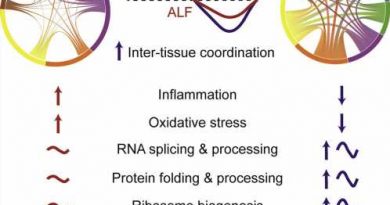Fatty liver disease: Six symptoms to spot indicating your condition is irreversible
Liver disease: NHS Doctor talks about link with alcohol
We use your sign-up to provide content in ways you’ve consented to and to improve our understanding of you. This may include adverts from us and 3rd parties based on our understanding. You can unsubscribe at any time. More info
Non-alcoholic fatty liver disease (NAFLD) is a build-up of excessive fat in the liver that can lead to liver damage resembling the damage caused by alcohol abuse, but that occurs in people who do not drink heavily. What are the six symptoms warning the condition has now become irreversible?
Cirrhosis is scarring of the liver caused by long-term liver damage.
The scar tissue prevents the liver working properly.
Cirrhosis is sometimes called end-stage liver disease because it happens after other stages of damage from conditions that affect the liver, such as hepatitis.
“When a patient’s liver disease reaches cirrhosis, a stage when the liver damage can no longer be reversed, it becomes a terminal diagnosis,” warns Crossroads Hospice, a health body offering end-of-life hospice care services to patients of all ages.
READ MORE: Cancer: Combination of two exercises may lower risk of death from the deadly disease

According to the health body, common symptoms of cirrhosis include:
- Loss of appetite
- Weakness
- Fatigue
- Nausea/Vomiting
- Abdominal pain/bloating
- Itching.
Between seven and 30 percent of people with non-alcoholic fatty liver disease (NAFLD) develop inflammation of the liver (non-alcoholic steatohepatitis, also known as NASH), leading to liver damage, said Medline Plus.
The health site added: “Minor damage to the liver can be repaired by the body.
“However, severe or long-term damage can lead to the replacement of normal liver tissue with scar tissue (fibrosis), resulting in irreversible liver disease (cirrhosis) that causes the liver to stop working properly.
“Scarring in the vein that carries blood into the liver from the other digestive organs, resulting in swollen blood vessels within the digestive system.
“Rupture of these varices can cause life-threatening bleeding.”

It is unclear what causes NASH and cirrhosis to develop in some people with NAFLD.
Researchers are studying several possible mechanisms to attribute to the cause of the conditions.
These include inflammation caused by an immune system reaction to the excess fatty tissue in the liver; toxic inflammatory chemicals (cytokines) released by the liver cells or fat cells; self-destruction of liver cells and the effect of unstable molecules called oxidative stress.
One possible cause relates to a person’s gut microbiota and its ability to absorb nutrients.
Studies have also identified many genetic changes that may be associated with the development of NAFLD and NASH.
Lower your risk
Fatty liver disease is a largely preventable condition if you commit to a healthy lifestyle.
According to the Mayo Clinic, choosing a healthy diet is a first-line defence.
“Choose a healthy plant-based diet that’s rich in fruits, vegetables, whole grains and healthy fats,” advises the health body.
It also recommends:
Maintain a healthy weight. If you are overweight or obese, reduce the number of calories you eat each day and get more exercise. If you have a healthy weight, work to maintain it by choosing a healthy diet and exercising.
Exercise. Exercise most days of the week. Get an OK from your doctor first if you haven’t been exercising regularly.
Source: Read Full Article



